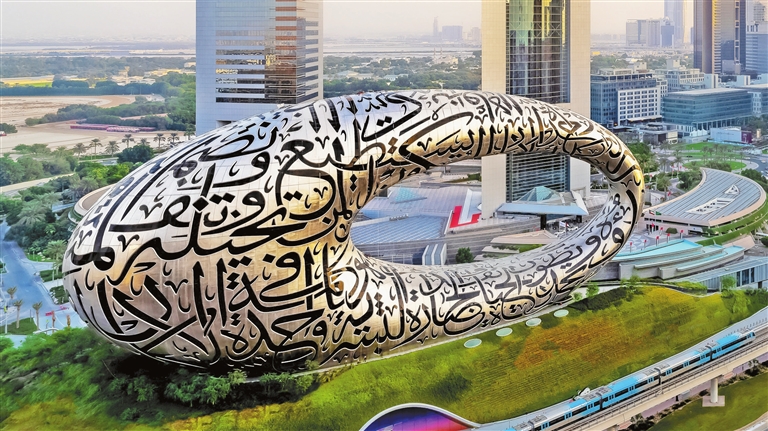
THE newly opened Dubai’s Museum of the Future in the UAE promises visitors an immersive experience that will help them imagine all that is possible for the world. The striking 78-meter-high structure in downtown Dubai has seven floors and each floor will resemble a futuristic film set with which visitors can explore and interact. Three floors of the museum will focus on possible scenarios for outer space resource development, ecosystems and bioengineering, health, wellness and spirituality. Another floor will display near-future technology that addresses challenges in areas such as health, water, food, transportation and energy. There is also a dedicated children’s floor, where they can explore and solve challenges “on their way to becoming future heroes. The museum envisions what the world could look like 50 years from today. It’s a vision that crystalizes the UAE’s own 50-year transformation from a pearl-diving backwater to a global interconnected hub fueled by oil and gas wealth. Moreover, the museum invites visitors to reconnect with their senses and disconnect from their phones, but digital screens and experiences flow throughout its installations. The museum also encourages visitors to think about the planet’s health and biodiversity in a city that celebrates consumption, luxury and consumerism. Visitors to the museum are ushered by an AI guide named “Aya.” She beckons people to experience a future with flying taxis, windfarms, and a world powered by a massive structure orbiting Earth that harnesses the sun’s energy and beams it to the moon. The so-called Sol Project imagines the moon covered by countless solar panels that direct that energy toward nodes on Earth, where humanity thrives and the planet’s biodiversity includes innovative plant species resistant to fire. The museum envisions that humanity’s collective energy project is directed by a space station called the OSS Hope, the same word in Arabic the UAE named its real-life mission gathering data from Mars’ atmosphere. Last year, the UAE became the first Arab country to launch a functioning interplanetary mission. The museum’s imagined future also draws from Islam’s past with a mesmerizing display of the planets in our solar system mapped by astrolabes, the complex devices refined by Muslims during the Golden Age of Islam to aid in navigation, time, and celestial mapping. The museum’s Arab thumbprint flows throughout, including in a meditation space that is part of a larger sensory experience guided by vibration, light, and water. These three elements underpinned life for tribes in the Arabian Peninsula. A stunning centerpiece of the museum is a darkened mirrored space illuminated by columns of tiny glass cylinders with the illusory DNA of animals and species that have gone extinct, including the polar bear whose Arctic habitat is currently threatened by warming temperatures. In this dreamscape future, the health of the planet is monitored like a person’s pulse, temperature, and other vital signs. The stainless steel-clad museum designed by Killa Design is a marvel that forgoes support columns, relying instead on a network of diagonal beams. It is enveloped in windows carved by Arabic calligraphy, adding another eye-popping design element to Dubai’s piercingly modern skyline that shimmers with the world’s tallest tower, the Burj Khalifa. The shape also represents humanity. The green mound on top is a symbol for Earth and the void represents the unknown future. The building’s windows are shaped in the form of Arabic calligraphy, designed by Emirati artist Mattar bin Lahej, which shows that the building “speaks Arabic.” The script is illuminated by 14 kilometers of LED lighting after dark. The facade features the poetry of Sheikh Mohammed bin Rashid, vice president of Dubai, about his vision for the city’s future. Translated into English, it says: “The future belongs to those who can imagine it, design it, and execute it. It isn’t something you await, but rather create.”(SD-Agencies) | 
